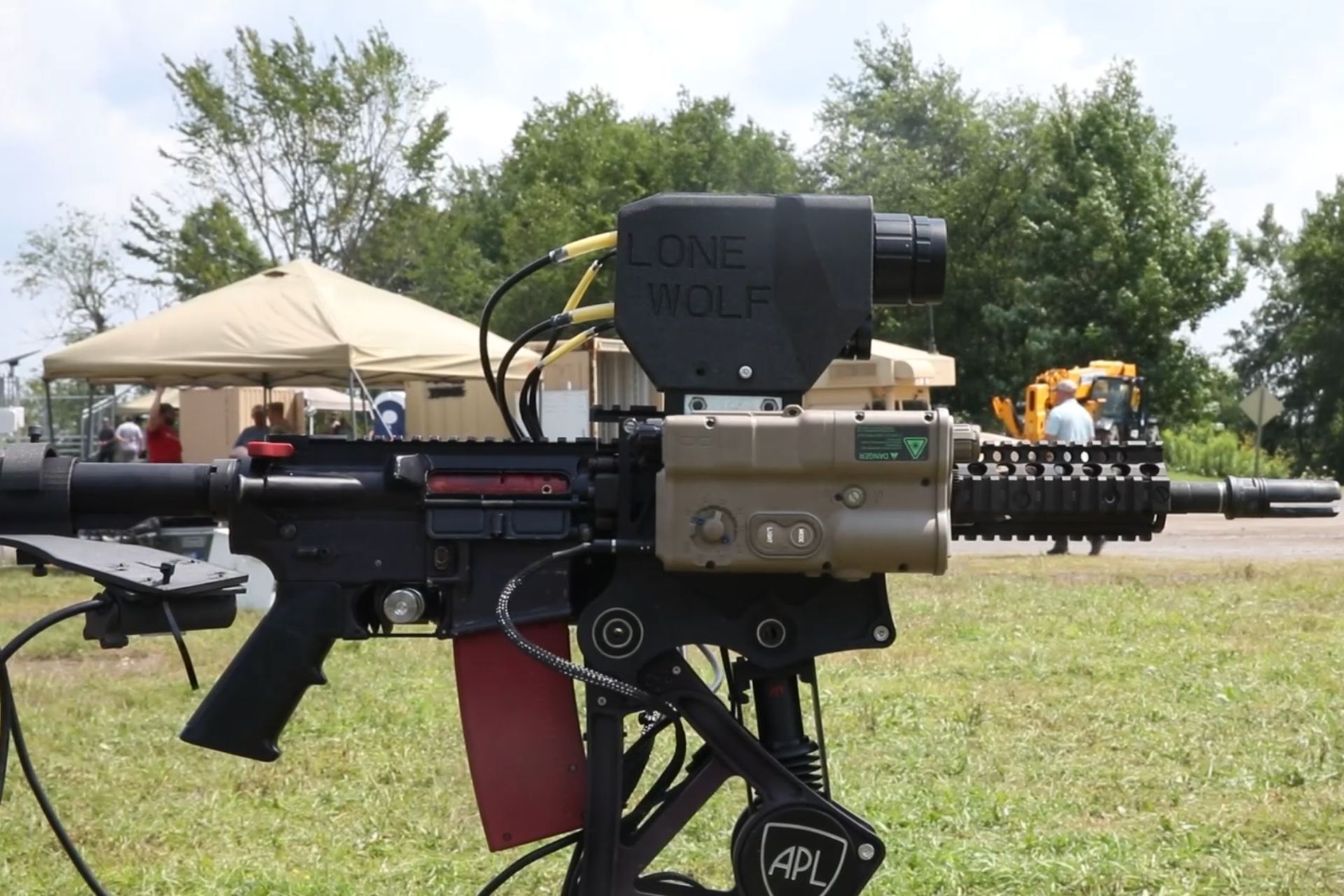Breaking News
US Military Deploys Armed Robot Dogs in Anti-Drone Training.
The U.S. Army is exploring new anti-drone capabilities, including using armed robot dogs to protect friendly forces from aerial threats. A robot dog equipped with a rifle turret is among the latest innovations being examined for this purpose. Observations from conflicts in Ukraine and ongoing crises in the Middle East have intensified the drive to acquire new anti-drone capabilities across the U.S. military. The arming of robot dogs is also of growing interest within the U.S. military and globally.
Follow Army Recognition on Google News at this link

At Fort Drum, New York, during Operation Hard Kill, the Vision 60 quadrupedal unmanned ground vehicle (Q-UGV) from Ghost Robotics, equipped with an AR-15/M16-type rifle, showcased its anti-drone capabilities (Picture source: US DoD)
A Vision 60 quadrupedal unmanned ground vehicle (Q-UGV) from Ghost Robotics, armed with an AR-15/M16-type rifle, is one of the anti-drone capabilities demonstrated at Fort Drum, New York, as part of Operation Hard Kill. This event, led by the Army's 10th Mountain Division and the Development Command-Armaments Center (DEVCOM-AC), began last month and concludes this week. Operation Hard Kill is a "live fire exercise" aimed at establishing Fort Drum as a premier counter-UAS (counter-uncrewed aerial systems) training center through the demonstrated capabilities of both lethal and non-lethal systems, as described by the Army earlier this year.
The AR-15/M16 is a family of military rifles originally developed by Armalite and later adopted by the U.S. military. The M16 entered service in the early 1960s and has been widely used by military forces globally. Known for its lightweight design, modularity, and precision, the rifle uses 5.56×45mm NATO ammunition and can be configured for semi-automatic or fully automatic fire. Over the years, various models and improvements have made the M16 a versatile weapon suitable for a range of combat situations.
The Vision 60 Q-UGV participating in Operation Hard Kill features an anti-drone configuration with a small turret mounted at the front, on which the AR-15-type rifle is fixed. The rifle is equipped with a relatively large electro-optical targeting system, labeled "Lone Wolf," featuring a large objective lens indicative of infrared/thermal vision capabilities, useful for spotting aerial targets.

The rifle is equipped with a relatively large electro-optical targeting system, labeled "Lone Wolf," featuring a large objective lens indicative of infrared/thermal vision capabilities, useful for spotting aerial targets (Picture source: US DoD)
A laser aiming device is also attached to the side. A GoPro-like video camera appears mounted on a mast at the rear of the Q-UGV. A video released by the Army shows individuals using tablet-like devices to remotely control the robot dog's rifle. Whether the system includes offboard sensor cueing is unknown, but some level of automated targeting would be highly preferable in the anti-drone role.
The SMASH series of computerized gun sights from Israel's Smart Shooter is an example of small arms optics offering target recognition and assisted aiming, usable in a remotely-operated configuration. SMASH variants are already in limited use by several branches of the U.S. military, and their use appears set to expand.
The turret assembly also bears the logo of Johns Hopkins University's Applied Physics Laboratory (APL), known for supporting U.S. military advanced research and development, including rapid prototyping. The War Zone has contacted APL for more information about this anti-drone robot dog.
The C-UAS-configured Vision 60 aligns with efforts by the U.S. Army and Marine Corps to extend anti-drone capabilities to the lowest levels of their force structures. In an anti-drone role, a robot dog could leverage its ability to access spaces humans cannot, providing better vantage points or expanded fields of fire to protect against aerial threats. This would allow friendly forces to engage hostile drones while remaining under cover.

Operation Hard Kill at Fort Drum showcased anti-drone capabilities like the Containerized Weapon System with laser-guided rockets and Javelin missiles, and Rheinmetall's Mission Master UGV with 7.62mm Miniguns, reflecting a trend toward counter-drone UGVs with advanced sensors. (Picture source: US DoD)
An armed robot dog with an infantry-type rifle is not a complete solution to the threats posed by uncrewed aerial systems. The Army and Marines, along with other U.S. military branches, envision a future with broader, layered anti-drone defenses.
Images and videos released from Operation Hard Kill show other anti-drone capabilities, including the Containerized Weapon System (CWS), which can be configured for anti-drone use with laser-guided 70mm rockets, Javelin anti-tank missiles, and other weapons for ground threats. A version of Rheinmetall's Mission Master unmanned ground vehicle, armed with a turret-mounted pair of 7.62mm Miniguns, also demonstrated at Fort Drum, reflects a trend in developing counter-drone UGVs equipped with small radar arrays and other sensors.
Rifle-armed robot dogs could also be used against other targets besides drones. Marine Forces Special Operations Command (MARSOC) is evaluating Vision 60s armed with rifles, and conventional Marine units are testing other robot dog types equipped with anti-armor rocket launchers. Several types of unarmed robot dogs are already in limited service within the U.S. military for various roles, including perimeter patrols around friendly bases. Armed robot dogs seem increasingly on the horizon for U.S. forces, potentially aiding in hunting hostile drones.


























